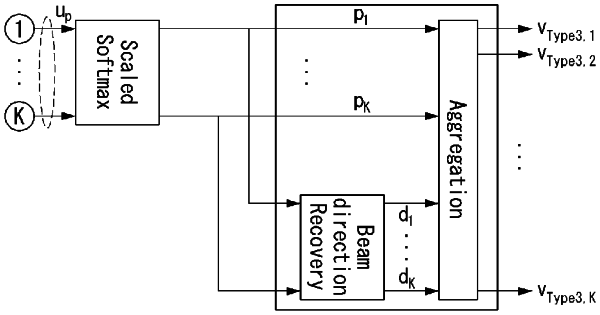| CPC H04B 7/043 (2013.01) [G06N 3/08 (2013.01); H04B 7/086 (2013.01)] | 15 Claims |

|
1. A beamforming method using a deep neural network, the deep neural network comprising an input layer, L hidden layers (L is a natural number greater than or equal to 1), and an output layer, and the beamforming method comprising:
obtaining channel information h between a base station and K terminals (K is a natural number greater than or equal to 1) and a transmit power limit value P of the base station, and inputting h and P into the input layer; and
performing beamforming on signals to be transmitted to the K terminals using beamforming vectors derived using the output layer and at least one activation function,
wherein the base station transmits the signals to the K terminals using M transmit antennas (M is a natural number greater than or equal to 1), and
wherein the deep neural network is trained:
in an unsupervised learning scheme in which parameters of the deep neural network are trained to minimize a loss function defined by multiplying a sum data rate calculated according to input-output mapping of the deep neural network by (−1); or
in a supervised learning scheme in which the parameters of the deep neural network are trained to minimize a loss function defined as a difference between a sum data rate calculated according to optimal beamforming vectors corresponding to the channel information h and the transmit power limit values P and a sum data rate calculated according to the input-output mapping of the deep neural network.
|